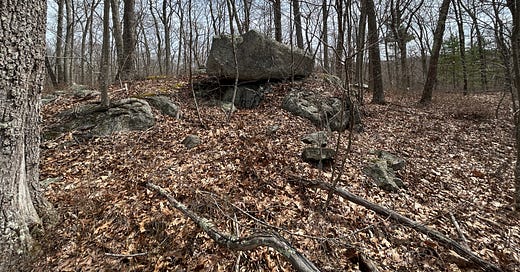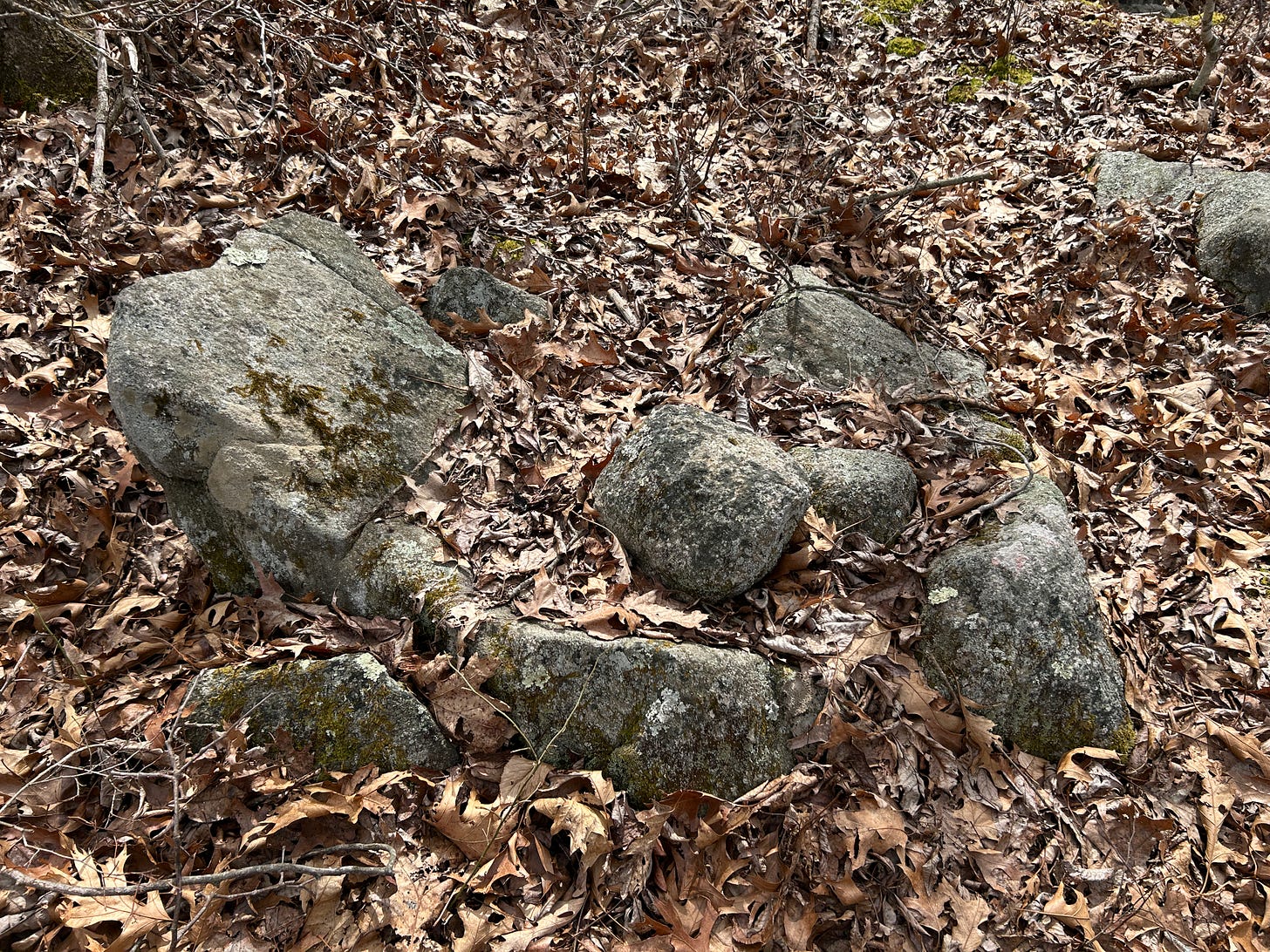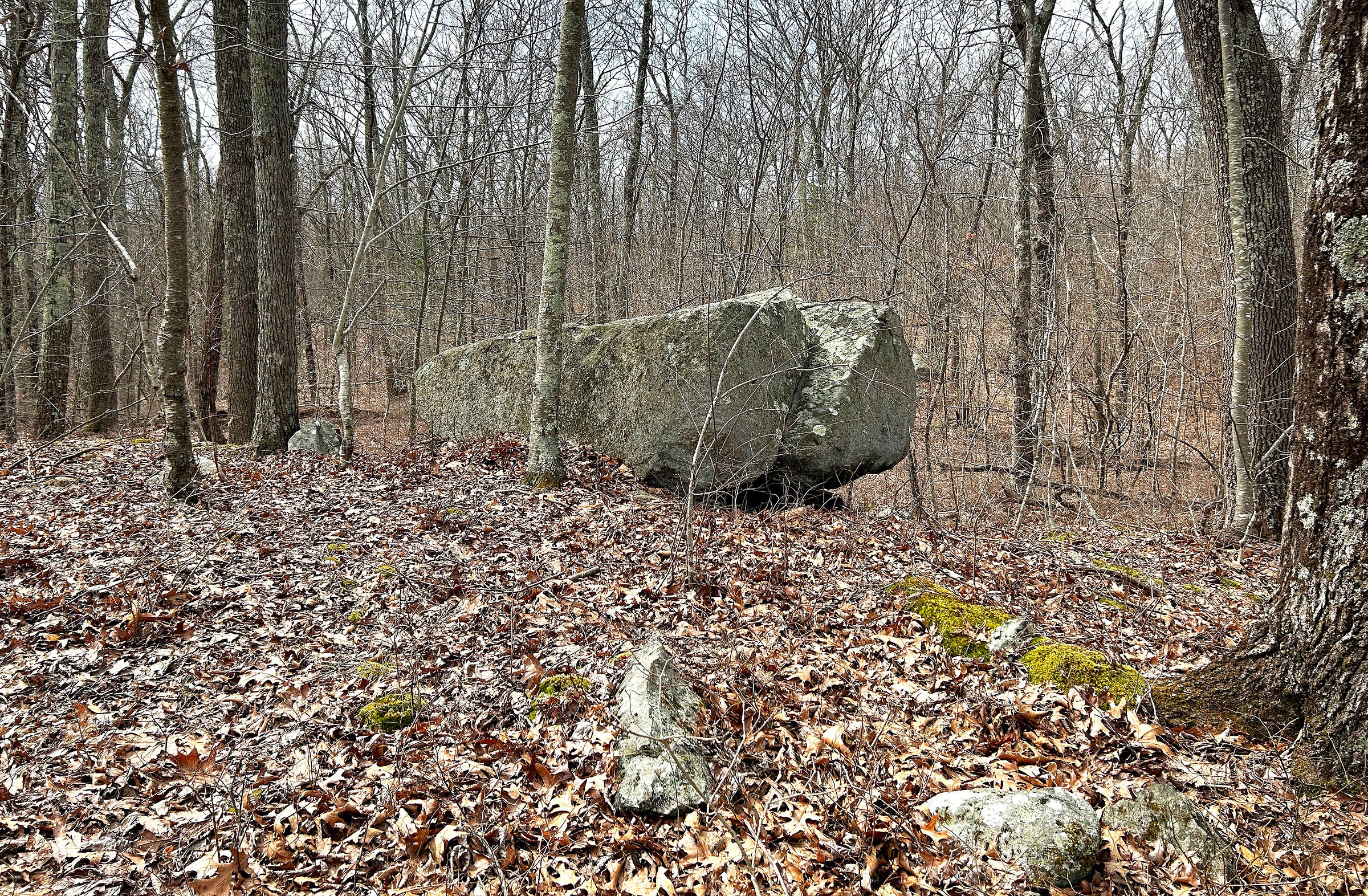Potentially Perched Split-Rock Stones in Holliston, Massachusetts
Split Stones May Be Spiritually Significant
On approach, this prominent stone in the Holliston, Massachusetts woods appeared to be a wedge-shaped boulder, potentially perched for a purpose. Certainly worth a closer look.
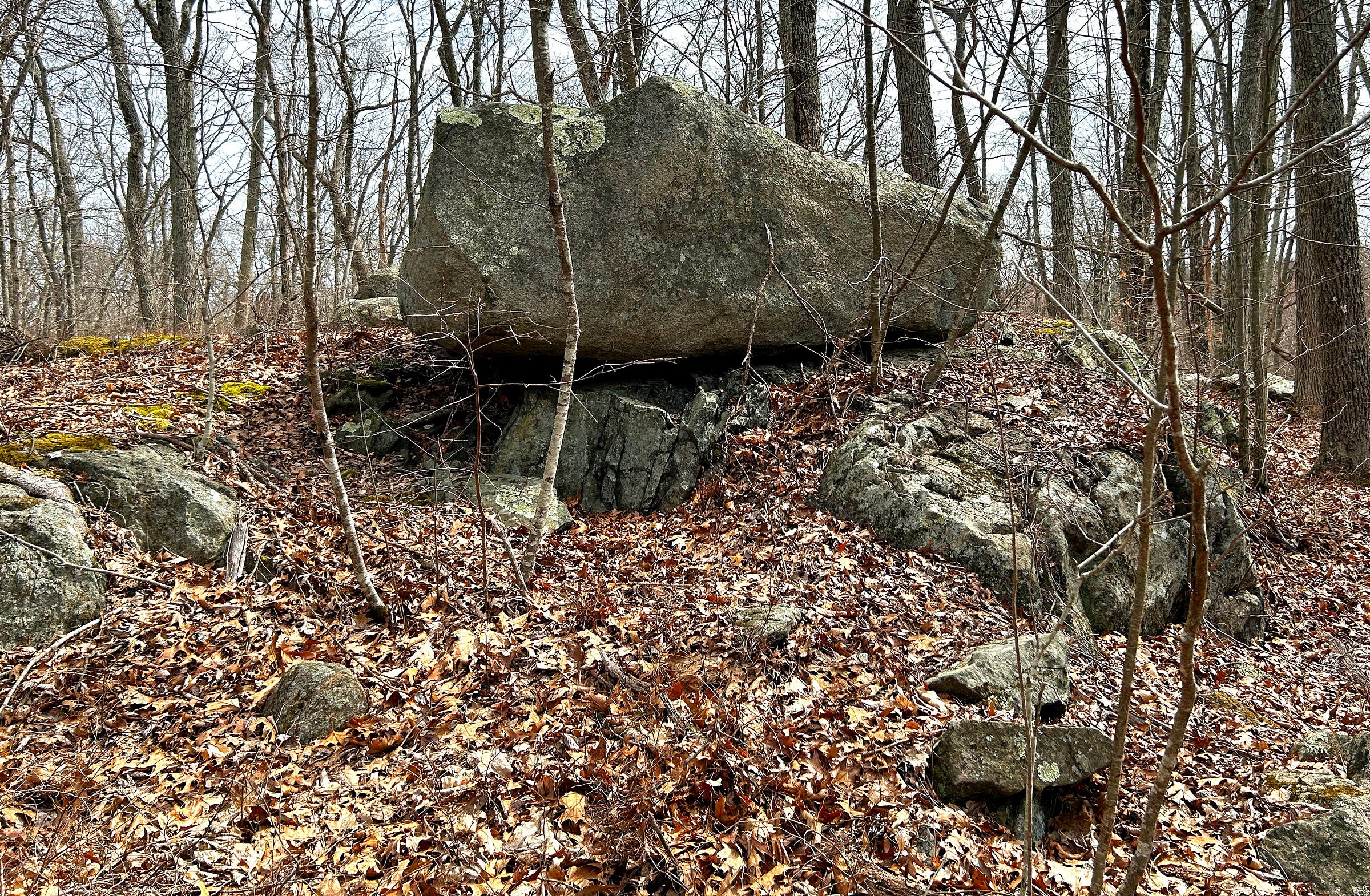
Circling around the boulder revealed that it was two stones together, not a single boulder. They still appeared apparently perched and — from this angle — almost symmetrical. The top stone seemed slightly smaller, but the two possessed a similar shape.
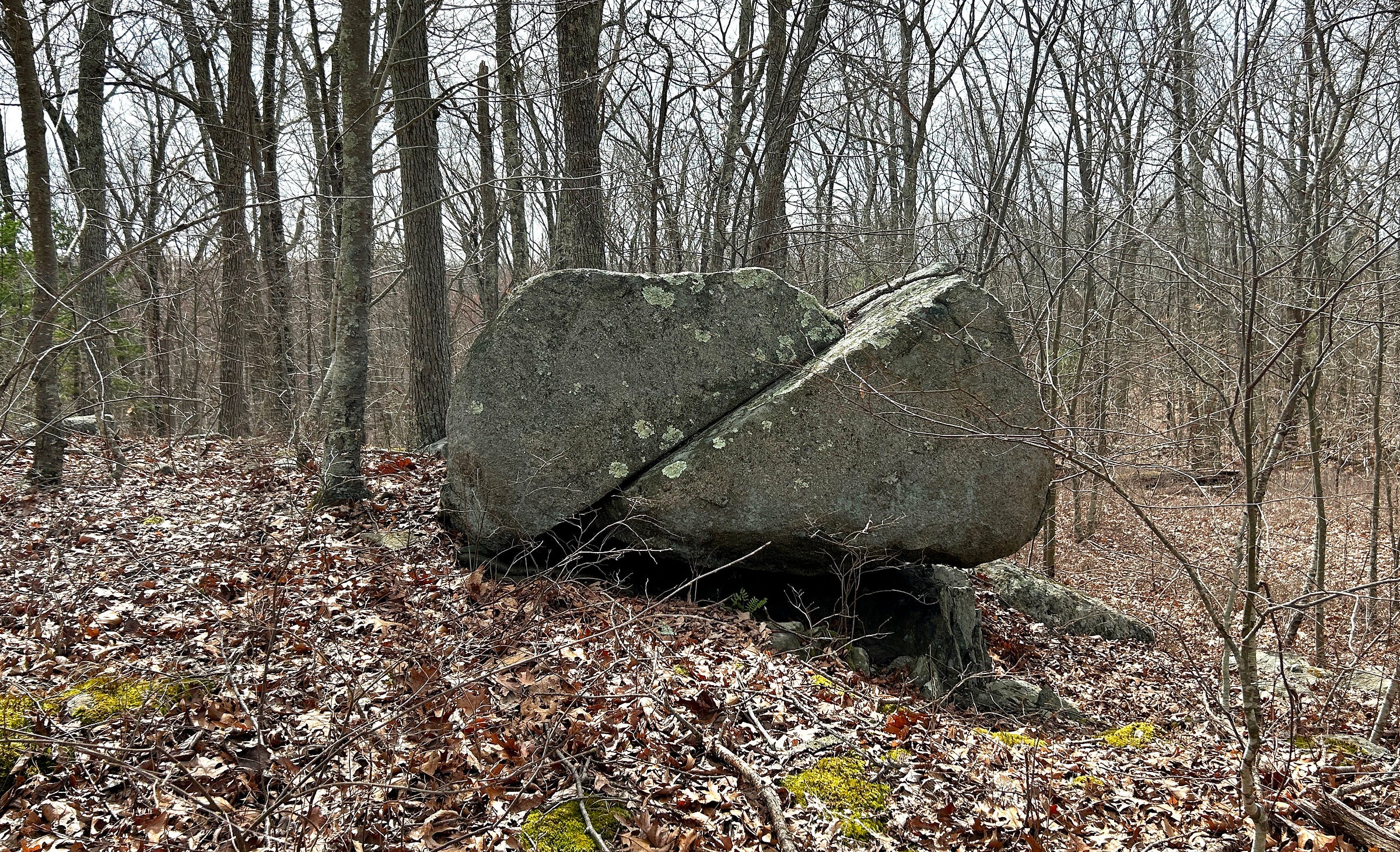
Viewing the stones from this angle, I looked down and noticed the stone at my feet had a large concave impression on its surface. Rounded stones sat in the concave space amidst leaves, moss and duff, creating the casual impression of a mortar and pestles. It’s an intriguing thing to see next to these possible perched Split-Rock Stones.
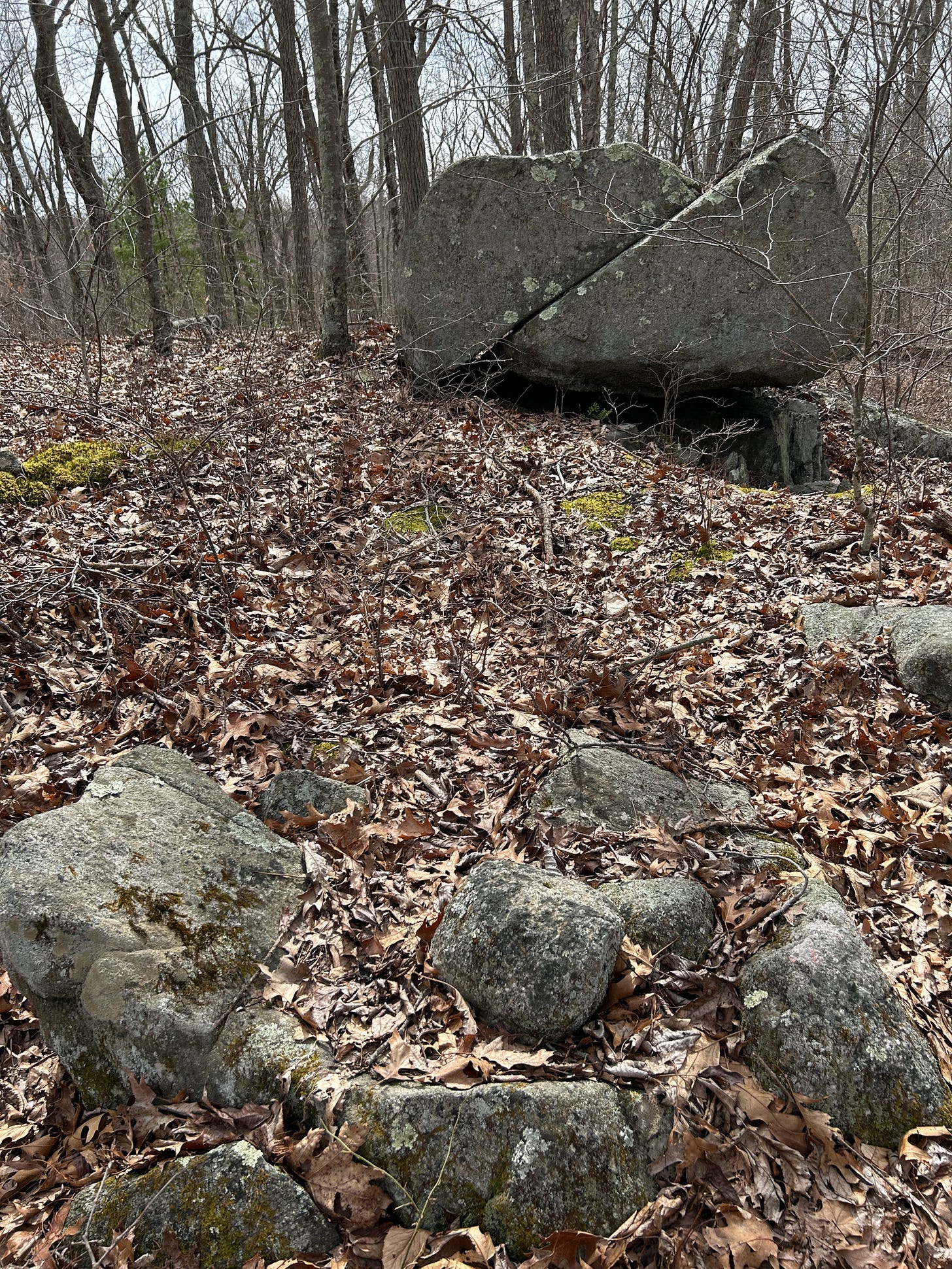
Here’s a video look as I continued around to the next side of these Possibly Perched Split-Rock Stones, beginning at the potential Mortar and Pestles.

Geology tells us this type of arrangement could have occurred naturally at the end of the last Ice Age, when these huge rocks would have settled down amidst melting rocks, ice, and mud, as the glaciers melted and the ice sheets pulled away. The smaller stuff would have washed away over time, leaving the boulder apparently perched on the larger stones beneath it.
We’re near another possibly Perched Boulder I came across in Holliston. As I pointed out in covering that one, despite the natural geological explanation, our changing knowledge of the size and complexities of pre-Contact Indigenous populations should also change the likelihood with which we view perched boulders such as these as being — and remaining — simply naturally placed.
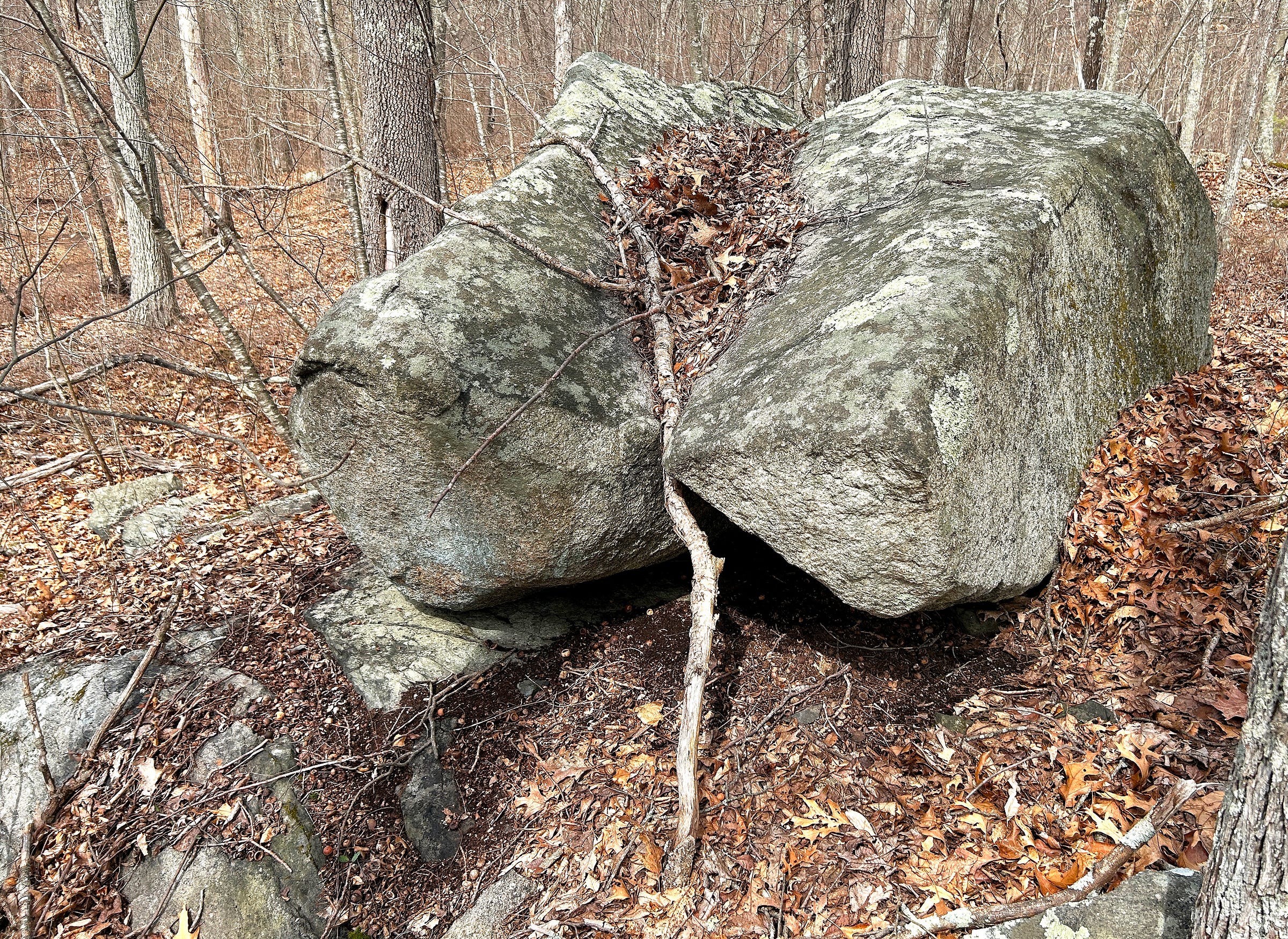
In his recent book A Shadow Under The Rock (2023), long time Stone Prayer researcher Peter Waxman identified Split-Rocks as —
…Boulders which are divided by a deep split. I spent a long time trying to interpret them so here goes: One reads that the Native Americans considered boulders to be “grandfathers” and that every rock contained a spirit. If that is so, then a split boulder is very significant, as the split creates a doorway between the outer world and the inner spirit of the rock (p. 201).
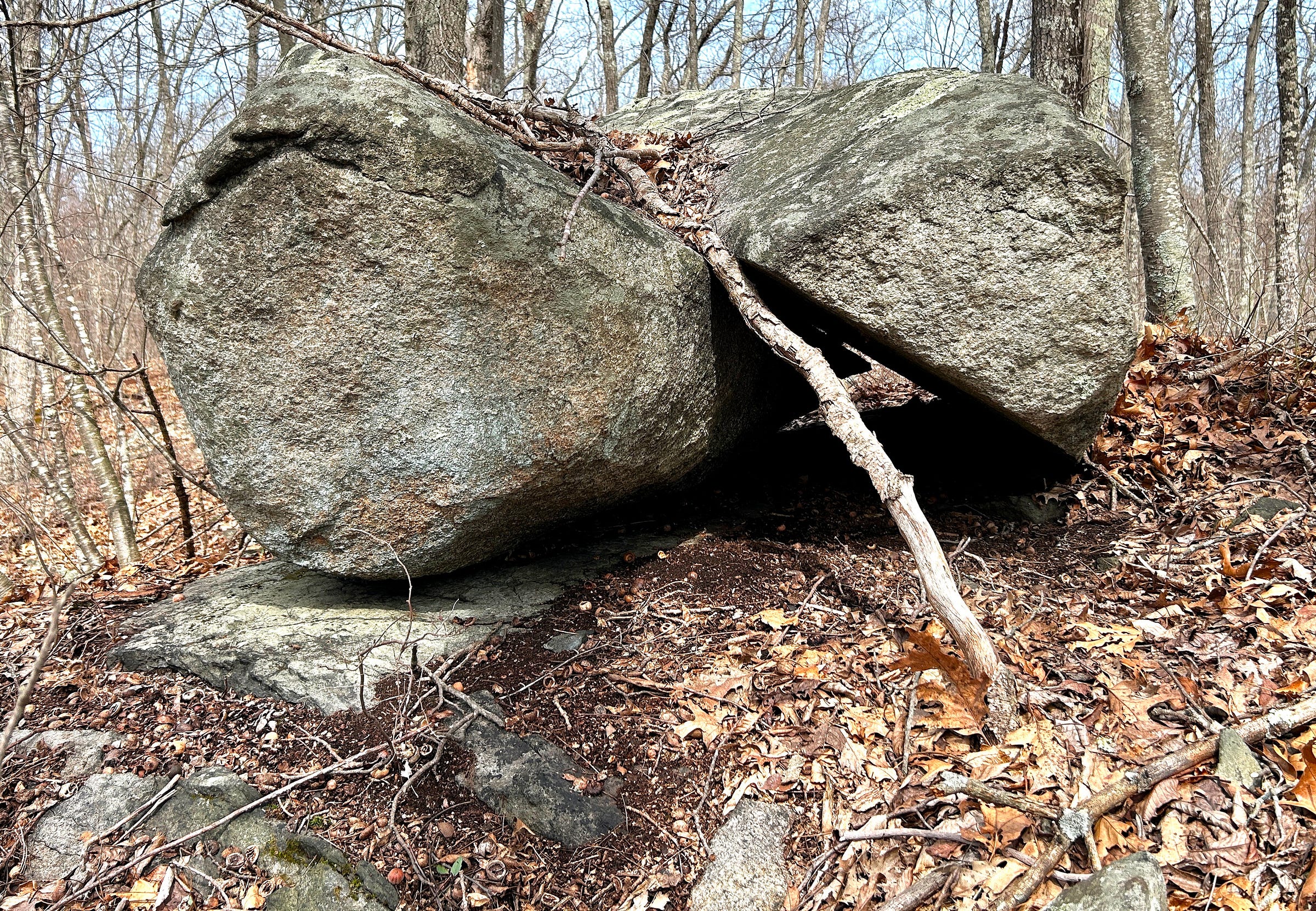
This one looks to be a sort of Balanced Split-Rock, maybe a blending of two types of potential Stone Prayers, Balanced Rocks and Split-filled Boulders. In identifying Indigenous Ceremonial Stone Landscape Structure Types in 2018's Stone Prayers – Native American Stone Constructions Of The Eastern Seaboard, archaeologist Curtiss Hoffman identifies Split-filled Boulders as:
…most likely naturally occurring boulders which have been split due to freeze thaw action into the splits of which rocks have been deliberately placed some researchers have suggested that this is to keep underworld spirits from exiting through the split but this is highly speculative (p.62).
Hoffman identifies Balanced Rocks as:
Usually large boulders resting on smaller rocks. While many of them may have been positioned by glacial actions, their association with other types of stone structures suggests that some of them were highly regarded by pre-Contact peoples, if not actually moved by them to occupy their present positions. Some of them show alterations by chipping, a human activity. Some of them are finely balanced so that the upper stone can be rocked against the lower, producing a loud sound which may have been used to summon people to ceremonies. Others appear to be fixed in place (p.62).
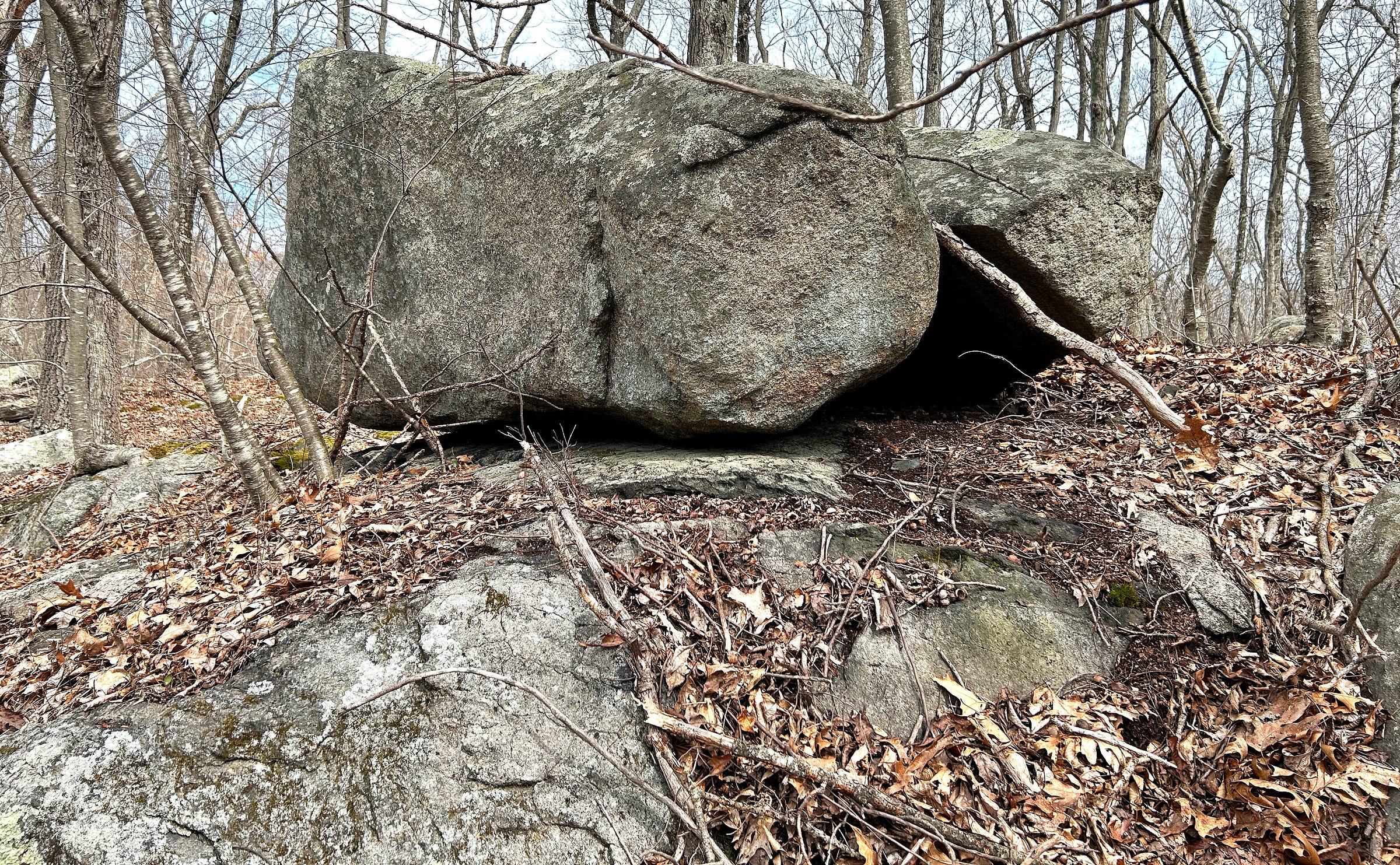
And so… these paired stones appear to be potential Stone Prayers, Balanced and Split-Rocks. Here’s a little more Substack-Exclusive video to get a better look:


